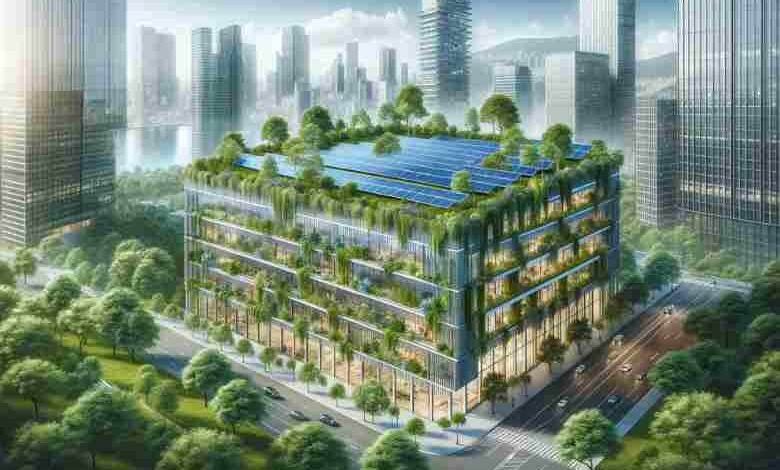Greener Horizons: Your Guide to Thriving in Eco-Friendly Building

In a world increasingly focused on environmental stewardship and climate consciousness, the green building industry stands as a beacon of innovation and responsibility. As the need for sustainable living spaces grows, so too does the opportunity for businesses to thrive by integrating eco-friendly practices into their building projects. But how does one begin to carve out a successful niche in this burgeoning market? This article explores the essential steps to launch and grow a green building business, offering a roadmap not just for corporate responsibility, but also for achieving long-term prosperity in a competitive industry.
Begin with the Right Green Building Credentials
Venturing into the world of green buildings is an exciting journey, but it’s essential to start on the right foot by aligning your business with established green building standards and certifications. These certifications not only enhance your credibility but also open up a vast market potential. Globally, certifications like LEED provide frameworks for reducing emissions and improving energy efficiency. By aiming for these certifications, you not only contribute to environmental stewardship but also ensure financial savings through enhanced operational efficiency.
Innovate with Cutting-Edge Eco Solutions
Embracing innovative green technologies and materials is key to establishing a successful sustainable building business. Integrating advancements such as self-healing concrete and thermally adaptive textiles can significantly boost your projects’ environmental performance. Additionally, incorporating cutting-edge technologies like artificial intelligence and automation in construction processes can enhance efficiency while minimizing waste. Opting for sustainable materials, such as bio-fabricated substances from fungi or algae, further reduces environmental impact, aligning your business with global sustainability trends and offering a competitive edge in an eco-conscious market.
Build a Resilient and Sustainable Business Plan
A strong business plan rooted in sustainability is crucial for long-term success. Start by establishing a vision that incorporates renewable energy use, mindful material sourcing, and waste reduction strategies. Regularly assess and adjust your strategies to ensure continuous improvement and risk mitigation. By embedding these practices into your operations, you not only enhance your reputation but also contribute to sustainable development.
Navigate the Challenges in the Eco-Friendly Sector
Navigating the green building industry comes with its own set of challenges, from adapting to evolving regulations to embracing new technologies. Bridging the gap between innovative design and practical implementation is crucial, as real-world challenges like user behavior can impact intended energy efficiency. To overcome these obstacles, leverage local supply networks to mitigate costs and delays associated with sourcing sustainable materials. Simplifying complex green certification rules can also enhance your project’s success rate, ensuring a more straightforward path to sustainable construction.
Forge Partnerships for Sustainable Expansion
Strategic partnerships and collaborations are vital for sustainable growth in the green building sector. By forming alliances with other businesses and stakeholders, you can boost innovation and efficiency. Embracing ecosystem partnerships allows you to deliver comprehensive solutions that meet the market’s evolving demands. Aligning with partners who share similar sustainability goals can amplify your impact, leading to more robust and scalable environmental initiatives. This approach not only promotes sustainable development but also positions your business for long-term profitability.
Connect and Convince Key Players in the Industry
Effectively advocating for green building initiatives involves educating and engaging stakeholders by aligning benefits with their interests. By identifying their motivations through surveys and interviews, you can tailor your communication to clarify the value of green certifications and address skepticism. Simplifying complex concepts like energy efficiency can bridge understanding gaps, fostering an informed environment where stakeholders feel involved. This not only garners support but also enhances decision-making, paving the way for successful project outcomes.
Market Your Business with Stunning Visuals
In the competitive green building market, captivating product photographs can significantly boost your visibility. To encourage potential customers to focus on your products without distractions, it helps to take background out of picture images using an online tool. This technique provides the flexibility to place images in varied contexts, enhancing their appeal in marketing materials. By integrating these edited images into creative designs, you maintain a consistent brand image while showcasing the versatility and modernity of your offerings. Such visual strategies convey your business’s sustainable values, attracting a broader audience.
The journey to launching and growing a green building business is both a challenge and an opportunity to reshape the future of architecture and urban development. By embedding sustainability into every layer of your business—from the materials you choose to the way you engage your stakeholders—you are not just building structures; you are constructing legacies of change. As businesses and consumers alike gravitate towards eco-conscious choices, your dedication to a greener vision will not only drive innovation but also inspire others in the industry. Embrace this moment as a chance to pioneer new standards, foster meaningful collaborations, and create spaces that honor the environment while standing as testaments to human ingenuity and responsibility.



